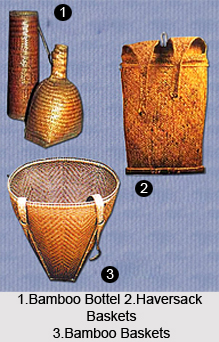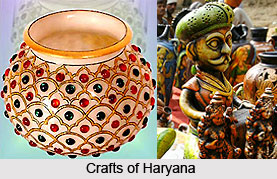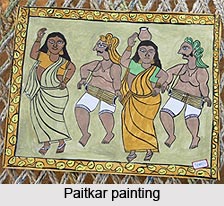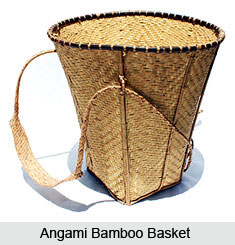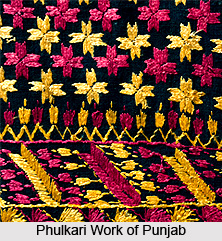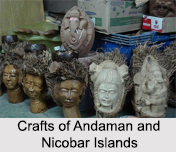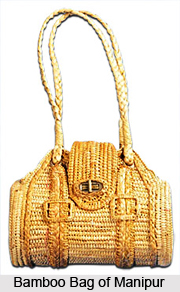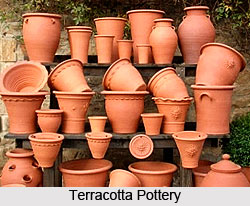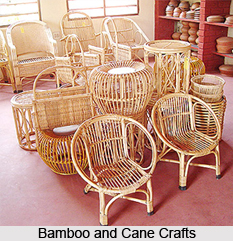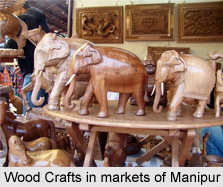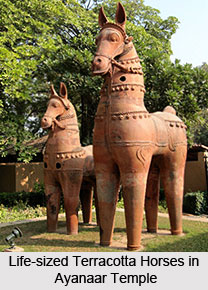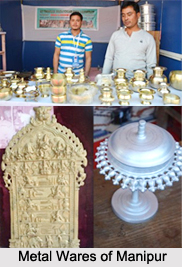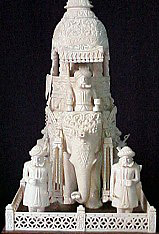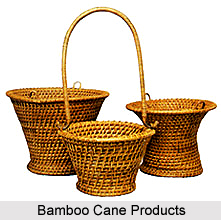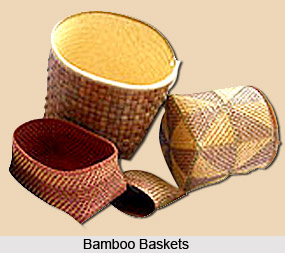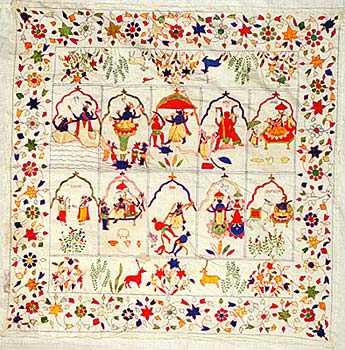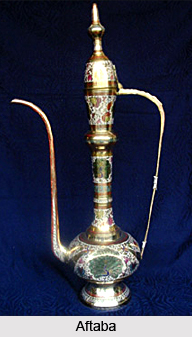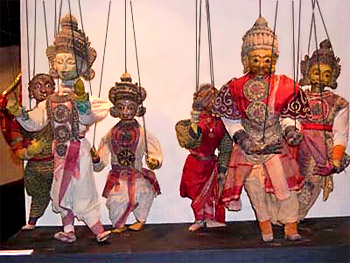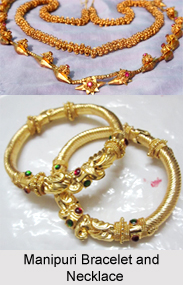 Ornaments add to the beauty of a person like dresses do. They have remained popular, even as metals they are made up of became dearer. India and Indian women are well known for beautiful ornaments and the costly metals that make them up are considered to be security for women, referred to as "Stree Dhan" in the country, literally meaning wealth of woman or wife. Ornaments have more relevance in Manipur, where women are generally fair and beautiful. The ornaments making them look even more elegant just like the shining land. The land of Manipur was itself known as Sna Laipak to the Meitheis of the state and Subarna Bhu to the rest of India, both signifying Land of Gold. This means that either gold was available in abundance or the land was known for consuming gold. Either way, it is certain that the land was linked with the precious yellow metal since mythical age. If they knew gold, the Manipuris also knew ornaments and therefore, they knew about silver and gems besides beads as well. In fact, the modern term "Manipur" means the land of gems. If the modern term and ancient terms of the land be linked, their literary meaning would be gold ornaments studded with gems.
Ornaments add to the beauty of a person like dresses do. They have remained popular, even as metals they are made up of became dearer. India and Indian women are well known for beautiful ornaments and the costly metals that make them up are considered to be security for women, referred to as "Stree Dhan" in the country, literally meaning wealth of woman or wife. Ornaments have more relevance in Manipur, where women are generally fair and beautiful. The ornaments making them look even more elegant just like the shining land. The land of Manipur was itself known as Sna Laipak to the Meitheis of the state and Subarna Bhu to the rest of India, both signifying Land of Gold. This means that either gold was available in abundance or the land was known for consuming gold. Either way, it is certain that the land was linked with the precious yellow metal since mythical age. If they knew gold, the Manipuris also knew ornaments and therefore, they knew about silver and gems besides beads as well. In fact, the modern term "Manipur" means the land of gems. If the modern term and ancient terms of the land be linked, their literary meaning would be gold ornaments studded with gems.
The geographical situation of Manipur is such that people of different origins passed through it from east to west and from west to east. This not only made the human population a more hybrid one, but the admixture also brought in multiple concepts of creativity from multiple streams, making the resultant craft of Manipur more beautiful than its neighbours. This is also applicable to their ornaments, which are extremely beautiful and appealing, just like the damsels of the state. Their own charm and colourful attire adorned with beautiful ornaments made Manipur a land of fairies.
Metals used in Ornaments of Manipur
Dr. R. Brown in the "Annual Report on the Munnipore Political Agency for 1868-1869, Selections from the Records of the Government of India, Foreign Department, No. LXXViii Statistical Account of Manipur, 1874" reported: "The ornaments are earrings, necklace and bracelets; ankle ornaments are never worn, or rings on the toes. Nose ornaments are limited to a small piece of gold wire in the side of each nostril. The only ornaments which may be worn without restriction are earrings; these may be worn by anyone. With regard to other ornaments of gold, permission for all but the upper classes to wear them must be obtained from the Raja. Ornaments of other metals than gold may be worn freely"
The king is gone and in the democratic set up today, anyone can wear any ornaments of any metal including gold. This is of course when affordable and when there is no fear of demand of ransom from insurgents. During yesteryears however, gold was the privileged metal of the king and his family. It was reported to be plentiful. The chronicles contain a passage describing the magnificence of the table equipage of King Khagemba, who feasted in vessels of solid gold and sat on a chair of gold. Scholar T. C. Hodson in his book "The Meitheis" recorded that the earrings worn by men and women are of plain gold, generally a thin casing over a solid piece of lac. Men do not wear any other ornaments. The necklaces donned by the upper class women are of simple and tasteful filigree designs manufactured by native goldsmiths, who prefer almost pure gold to work on, their tools not being tempered to be worked on alloyed gold. The bracelets and necklaces are chiselled and hammered patterns, while plain beads formed round a hollow nucleus of the sac are common. He also remarked that the jewellery manufactured in the state is of fair workmanship not distinguished by any special merit. Rings, bracelets and necklaces are the articles chiefly made, along with a large number of brass and bell metal armlets characterised for the hill men.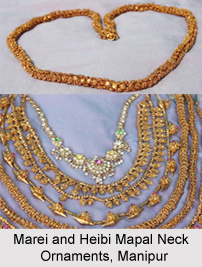
The use of gold for jewellery making was more plentiful among the Meitheis than any other metal. But it is also factual that a class of workers during the feudal Manipur period called Konsangs, were supposed to look after the manufacture of silver and brass vessels. This shows that silver and brass were not unknown to the Manipuris. In spite of the fact that gold is still preferred, they also make silver ornaments and it is more so today when the soaring prices is making gold beyond the reach of commoners, although in many cases, they use silver plated with gold.
Beads and Gems used in Ornaments of Manipur
The use of beads in making ornaments is also fairly common. Beads are usually used for making necklaces, made by making garlands by passing thread through the beads. Designs are several and sometimes several garlands are combined to make a single necklace.
The Meitheis knew the use of gems. Many of their traditional gold ornaments are studded with gems of various kinds. It is said that the local gems are available in the Chandel and Ukhrul districts. Traditionally, the Meitheis used to buy the raw gems from the tribes, cut and polish their own way and use them in jewellery. Sometimes they used to bring gems from Burma as well as rest of India. But in the recent past, many of them have acquired the knowledge of gem cutting in modern technique, while also having completed degrees and diplomas in gemmology. It is said that the finished gem from Manipur is of international standards. Gem dealers of Jaipur and Mumbai are getting their products finished from Manipur, since it can be done in a finer way at low cost. Thus, the ornaments of Manipur today have a better dazzle.
Many of the traditional ornament designs of Manipur are still popular. Some of them like Marei, Kiyang-Likphang, Heibi Mapal, Khimahurn etc. are still very popular. Marei and Heibi Mapal are the most popular, distinctive and highly artistic. These exquisitely rich and intricate jewellery designs are finding a whole new clientele among urban women. The material used range from gold, silver and brass. Popular ornaments include brass and silver necklaces, earrings and nose studs.
Tribal Ornaments of Manipur
The tribal ornaments of Manipur are typically different. While making ornaments, the tribes rarely use metals. They procure ornaments made of metals from the Meitheis or from Assam. Their exclusivity in ornaments lies in bead ornaments, ivory armlets and ornaments from seeds or beetles.
The tribal armlets are mostly hollowed ivory rings or rings of shells, either made by themselves or procured from outside. Brass and bell metal armlets and bangles are usually acquired from the Meitheis. Necklaces and necklets are usually made using beads, which are either made from bone of animals they consume or seeds of certain plants. The beads are round or cylindrical, polished by hand by rubbing against stone, with a thorough hole at the centre. Necklaces are made by passing strings through the beads with help of a needle. As variation in design, cowries are occasionally used in between. Beads are of multiple colours and necklaces are made of several layers depending on chosen design. These bead necklaces are often part of their dancing attire. On such bead necklaces, red, black and white beads come really attractive.
Often, wrist bands are made out of beads the same way as necklaces. They match the necklaces made. Bead hair bands are also quite appealing. Many tribes also use bamboo or cane legging dyed with vegetable dyes as ornaments. These leggings are coiled after heating according to size of the wearer and then dyed. Cane or bamboo ear and nose studs were common, along with cane armlets or wristlets dyed and adorned with bird feathers.
Manipur, thus, has a very rich and vibrant tradition of ornaments and ornament making, some flourishing while some others languishing, depending upon social changes and market demand. With more appropriate inputs, ornaments of Manipur can be further promoted.
Related Articles:
Manipur
Crafts of Manipur
Meithei
Gold Jewellery in India
Silver Jewellery in India
Beaded Jewellery
Filigree Jewellery in India
Indian Tribal Jewellery
Ivory Jewellery
Bamboo and Cane Crafts of Manipur
